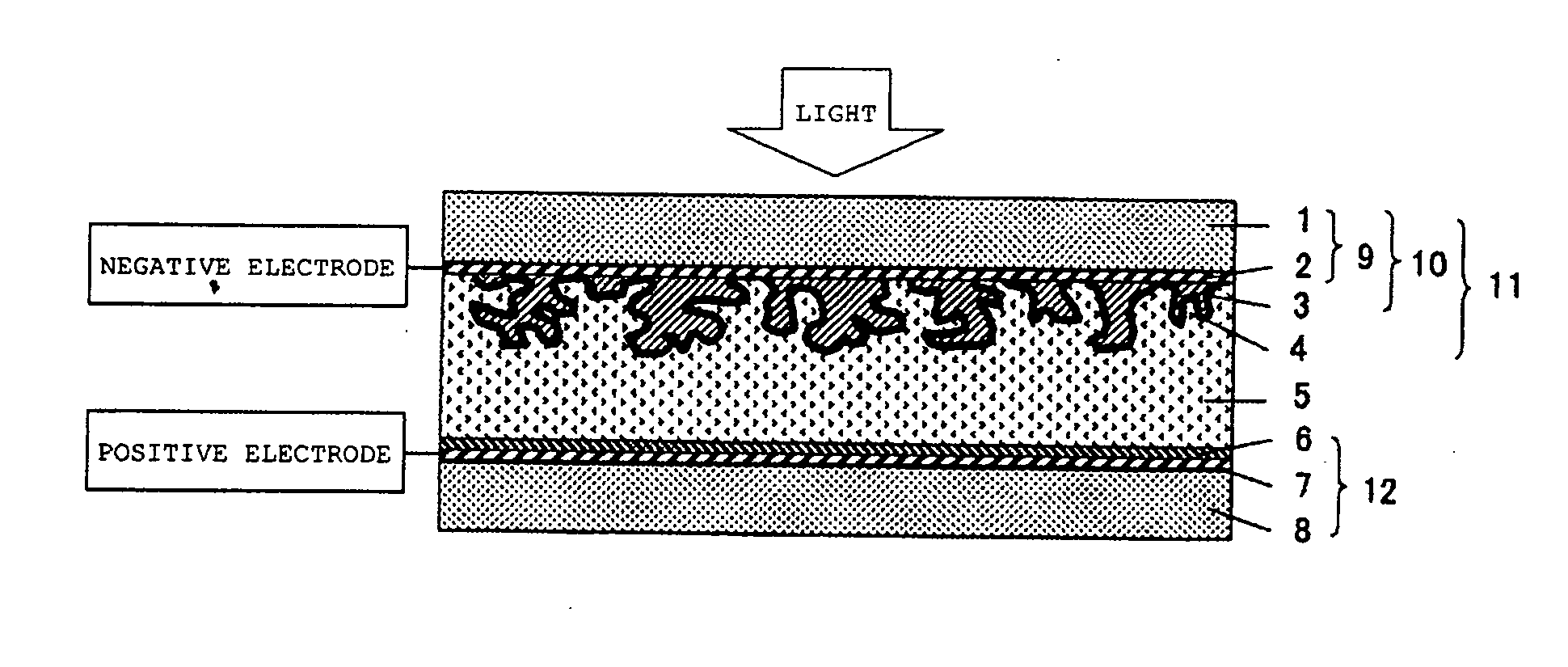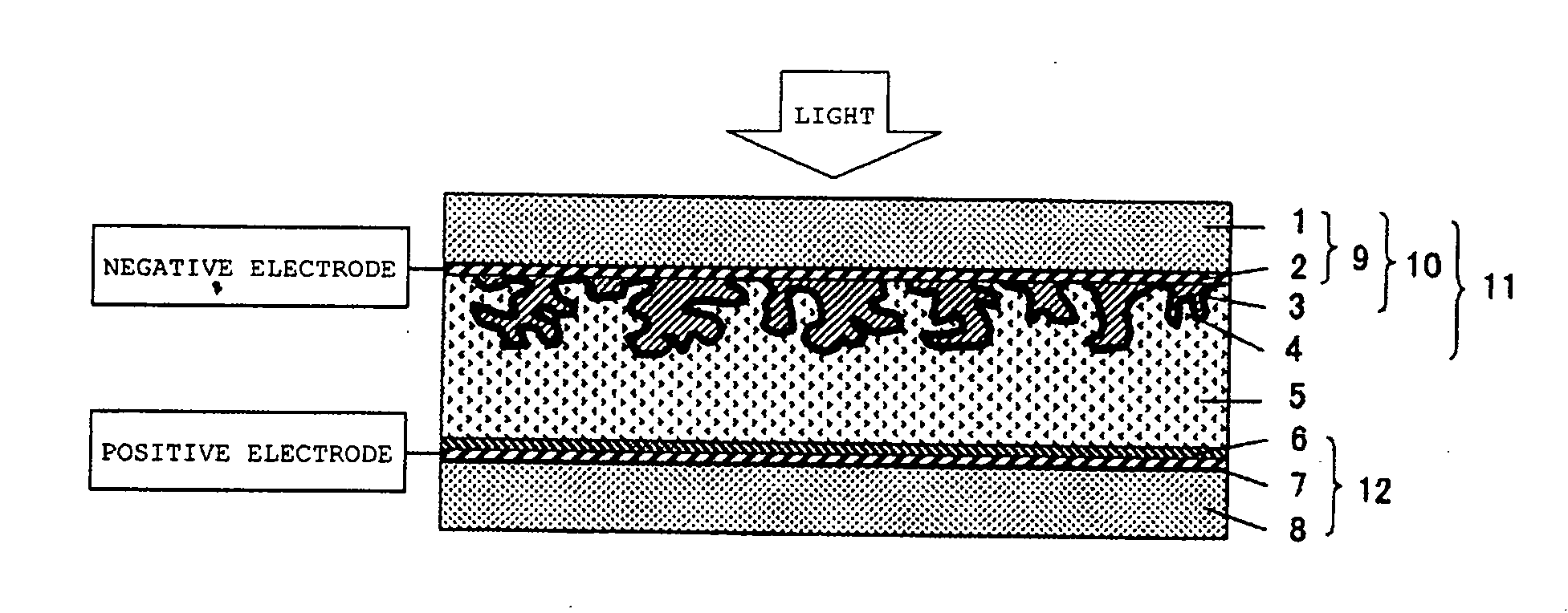Metal oxide dispersion for dye-sensitized solar cells, photoactive electrode and dye-sensitized solar cell
a solar cell and metal oxide technology, applied in the direction of cell components, final product manufacturing, sustainable manufacturing/processing, etc., can solve the problems of poor photoelectric conversion efficiency, heavy weight, and high cost, and achieve the effect of improving photoelectric conversion efficiency and reducing cos
- Summary
- Abstract
- Description
- Claims
- Application Information
AI Technical Summary
Benefits of technology
Problems solved by technology
Method used
Image
Examples
example 1
[0106] In a mortar, 100 g of titanium oxide (P25, manufactured by Nippon Aerosil Co., Ltd.; titanium oxide prepared by a gas phase method; D90=3.1 μm; distribution constant n=1.4), 0.5 gof poly (N-vinylacetamide) (VIAC GE-191, manufactured by Showa Denko K. K.), and 400 g of water were dispersed to obtain a metal oxide dispersion. This was coated on a glass electrode (CS-4S230, glass with a fluorine-doped tin oxide film, manufacturedby Nippon Sheet Glass Co., Ltd.) by a doctor blading method (using a 40 μm applicator) and then left to stand in a room for 2 hours to obtain a photoactive electrode having a film thickness of 6 μm. Then, this was immersed in an ethanol solution of ruthenium complex dye (RuL2(NCS) 2 manufactured by Kojima Chemical Reagents, Inc.) for 3 hours to obtain a dye electrode. An excess of metal oxide film on the dye electrode was scraped off with a cutter knife so that the metal oxide film had a size of 5×5 mm. On the other hand, platinum having a thickness of 0...
example 2
[0107] A dye-sensitized solar cell was fabricated in the same manner as in Example 1 except that in the metal oxide dispersion, 0.1 g of N-vinylacetamide / sodium acrylate copolymer (VIAC GE-195, manufactured by Showa Denko K. K.) was used in place of poly(N-vinylacetamide). This solar cell had a photovoltaic force of 3.3 mW / cm2.
example 3
[0108] A dye-sensitized solar cell was fabricated in the same manner as in Example 1 except that in the metal oxide dispersion, 1 g of polytetrafluoroethylene (F-104, manufactured by Daikin Industries, Ltd.) was used in place of poly(N-vinylacetamide) and 400 g of methylcellosolve was used in place of water as a solvent. This solar cell had a photovoltaic force of 2.8 mW / cm2.
PUM
| Property | Measurement | Unit |
|---|---|---|
| temperature | aaaaa | aaaaa |
| temperature | aaaaa | aaaaa |
| temperature | aaaaa | aaaaa |
Abstract
Description
Claims
Application Information
 Login to View More
Login to View More - R&D
- Intellectual Property
- Life Sciences
- Materials
- Tech Scout
- Unparalleled Data Quality
- Higher Quality Content
- 60% Fewer Hallucinations
Browse by: Latest US Patents, China's latest patents, Technical Efficacy Thesaurus, Application Domain, Technology Topic, Popular Technical Reports.
© 2025 PatSnap. All rights reserved.Legal|Privacy policy|Modern Slavery Act Transparency Statement|Sitemap|About US| Contact US: help@patsnap.com


